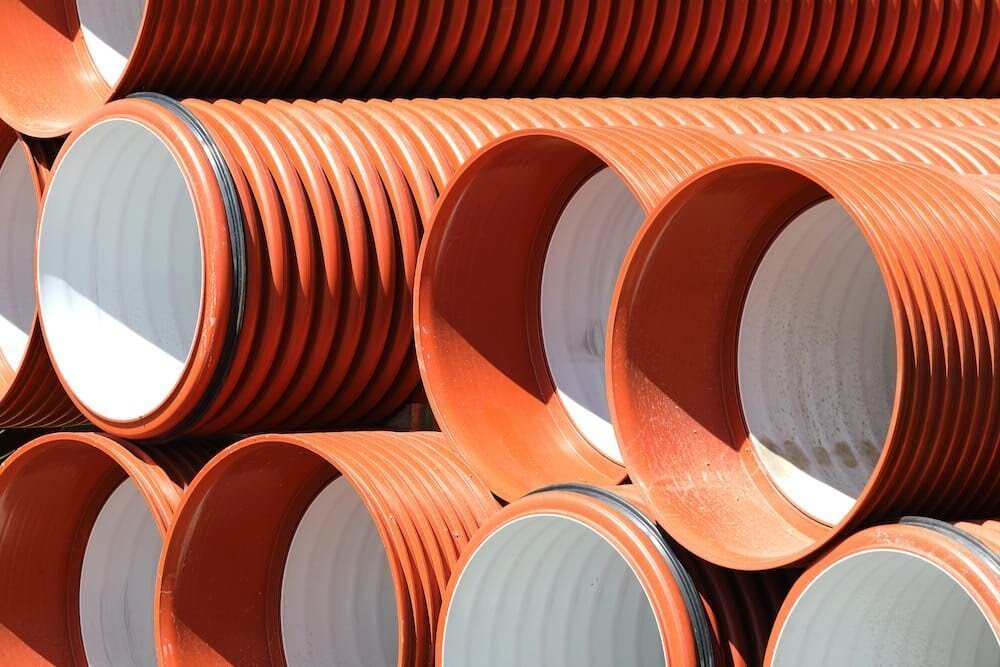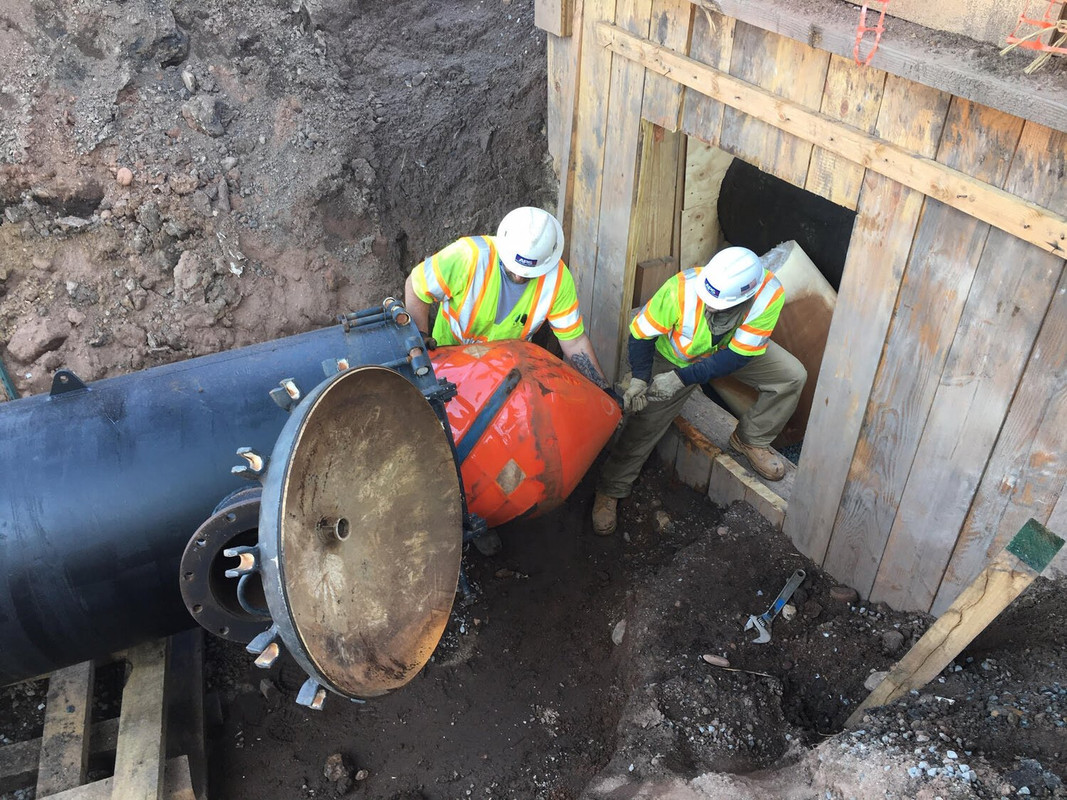3 Most Common Issues in Force Main Sewer Lines
A functional sewer system plays an integral part in a city’s waste management processes. As a sewer system ages, its pipes begin to show signs of wear. Without proper maintenance, a pipe can become severely damaged to the point where it must be replaced.
The first step in your wastewater pipeline maintenance strategy is assessing the conditions of the sewer system. Typically, the processes differ depending on the type of sewer pipeline examined. In the end, these processes will determine what cleaning and maintenance method is most effective for your pipelines. One important area to cover in your maintenance is your sewer system’s force mains.
At American Pipeline Solutions, our goal is to help you understand the issues your pipeline faces and how to properly address it. This article outlines some common force main problems to help you identify these issues in your systems.
Pipeline Experts: Inspection, Cleaning, Coating & More
Certified solutions for inspection, pre-commissioning, cleaning, internal coating, ice pigging™, mapping, and turnkey pipeline projects—maximizing safety and reliability at every stage.
3 Common Force Main Problems
1. Buildup in the Pipeline
Even if you don’t see any telltale signs of pipeline blockage, buildup in your force main can still cause issues. An example of this is the accumulation of solid deposits along the bottom of your pipeline.
As wastewater flows through your pipes, heavier particles can accumulate in a solid deposit. Depending on the type of particles, this results in a flow regime with a sliding bed or a stationary bed. A sliding bed can cause abrasion of the pipe’s interior, which wears away at the pipe’s interior wall. Conversely, a stationary bed reduces the cross-sectional area available in the pipe. By and large, both types of solid deposits can cause long-term force main problems to occur if left unaddressed.
2. Corrosion of Pipeline’s Interior
Corrosion force main problems are unique due to the presence of hydrogen sulfide in the pipeline. Hydrogen sulfide is a naturally occurring gas in low-lying, enclosed spaces such as the sewer. Not only is this gas dangerous to inhale, but it can also cause damage to a sewer’s pipelines.
Internal corrosion caused by hydrogen sulfide occurs in two ways. The primary cause of internal corrosion is known as an acid attack. An acid attack occurs when hydrogen sulfide gas converts to sulphuric acid when the gas is in the presence of moisture. Another internal corrosion mechanism is hydrogen sulfide having a direct chemical reaction to the metal in a pipe’s interior, such as iron.
3. Loss of Structural Integrity in the Force Main
Damage caused by force main problems like buildup or corrosion can lead to the loss of a pipe’s structural integrity. For example, abrasion caused by buildup in a pipeline can grind away at a pipe’s interior surface. This weakens the pipeline and, thus, shortens the pipeline’s longevity.
Corrosion causes a more immediate concern due to the increased likelihood of a leak occurring. A localized acid attack in a pipe can result in a hole appearing in the pipe’s wall. This hole leads to leakage of the pipe’s sewage, which then causes environmental damage.
Pipeline Experts: Inspection, Cleaning, Coating & More
Certified solutions for inspection, pre-commissioning, cleaning, internal coating, ice pigging™, mapping, and turnkey pipeline projects—maximizing safety and reliability at every stage.
Protect and Prevent Damage to Your Force Mains
This is by no means an exhaustive list of every issue that might occur in your force mains. Nevertheless, these issues clearly show why routine force main maintenance is necessary.
One way to achieve this is by contacting experts like American Pipeline Solutions to perform force main inspections. Visual inspection of your pipeline by American Pipeline Solutions can quickly identify issues such as pipeline blockage.
All in all, American Pipeline Solutions combines quality inspection equipment with years of industry experience to identify and address a client’s needs.
Frequently Asked Questions
What is a force main sewer line?
A force main is a pressurized pipeline that moves wastewater from a lower to a higher elevation using pumps. Unlike gravity sewer lines, force mains require constant pressure to push flow through the system, which makes them more vulnerable to buildup, corrosion, and pressure-related wear over time.
What causes buildup inside a force main?
Buildup typically forms when heavier solids in wastewater settle along the pipe’s bottom and accumulate into a stationary or sliding bed. These deposits reduce flow efficiency and can cause abrasion that weakens the pipe wall. Regular cleaning and inspection prevent long-term damage and maintain hydraulic capacity.
Why is hydrogen sulfide dangerous to sewer pipelines?
Hydrogen sulfide (H₂S) gas is common in enclosed wastewater systems. When combined with moisture, it converts into sulfuric acid, which aggressively attacks pipe walls. It can also chemically react with metals such as iron, leading to corrosion and leaks. Controlled ventilation and routine monitoring reduce this risk.
How does corrosion affect a force main’s integrity?
Corrosion thins the pipe wall, creates pitting, and can eventually form holes that leak sewage into the environment. It not only shortens the system’s lifespan but can also trigger costly repairs or replacement. Early inspection and interior coatings can slow or stop corrosion before structural failure occurs.
What are the signs of structural failure in a force main?
Reduced pressure, recurring blockages, visible leakage, or ground subsidence above a line can all indicate a loss of structural integrity. These symptoms suggest internal abrasion or corrosion damage that needs immediate evaluation by a qualified inspection team such as American Pipeline Solutions.
How often should force mains be inspected or cleaned?
Most municipalities and facility operators inspect force mains annually or bi-annually, depending on flow rates and material type. Regular inspection allows early detection of buildup and corrosion, reducing the likelihood of leaks and extending the line’s operational life.
What maintenance methods protect force mains from damage?
Preventive programs often include routine cleaning, corrosion monitoring, interior coatings, and periodic pressure testing. Partnering with specialists like APS ensures the right procedures and equipment are applied safely and efficiently for each pipeline’s condition.
How does American Pipeline Solutions help maintain force mains?
APS performs visual and instrument-assisted force main inspections to detect corrosion, deposits, and structural issues early. Combining advanced cleaning and conditioning tools with decades of field experience, APS helps clients protect infrastructure, maintain compliance, and avoid costly emergency repairs.
Are you looking to improve your wastewater pipeline maintenance strategy?
Contact American Pipeline Solutions today to partner with a team that has 100 years of combined experience in the pipeline industry.



















